#robin givhan
Photo


“Just by stepping onstage, she gives popular culture a new chapter in the female story.”
#Madonna#2023#Washington Post#The Celebration Tour#the washington post#Robin Givhan#Madonna 2023#Madonna40#Queen of Pop#pop culture
16 notes
·
View notes
Photo

Robin Givhan on sexiness in fashion (x)
5 notes
·
View notes
Photo


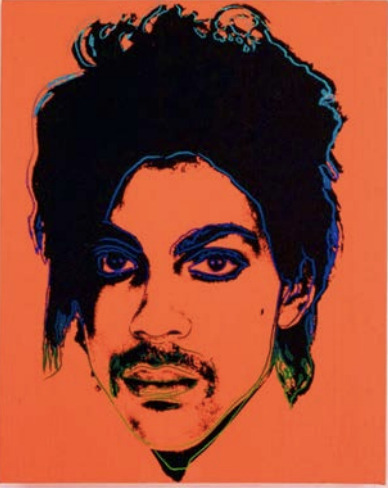

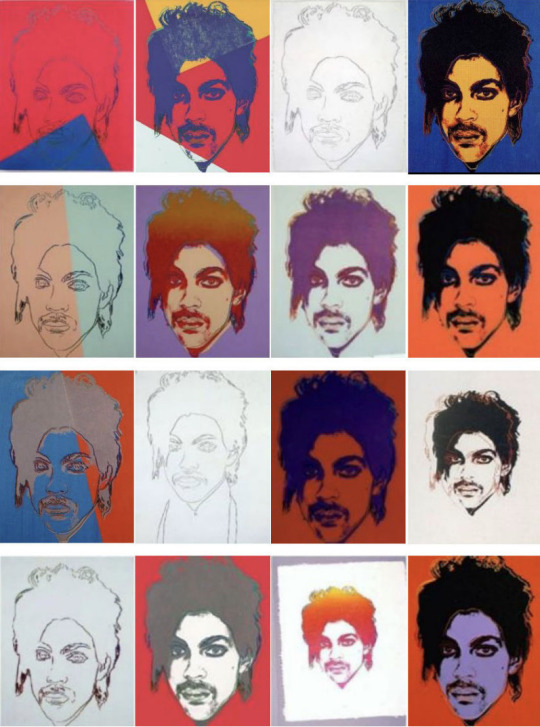
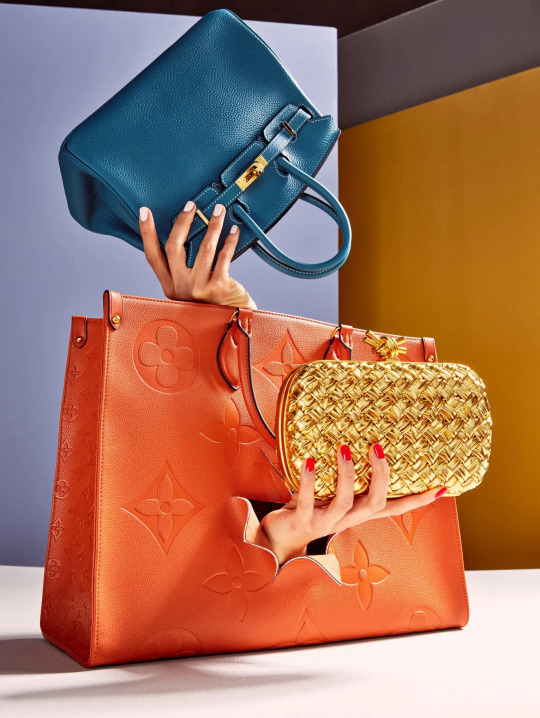
What’s Fake and what’s Real when everything can be Licensed?
The Pros and Cons of Storytelling when Design Dupes and Authenticity Exist in a Heritage Universe
Every time I am in Florence, I stop by the Gucci Garden. I still remember when it was the Gucci Museo and I revel in traveling through the halls and remembering what is used to be, as a museum, and seeing the differences now that it is a meditation on Gucci advertisements (or at least it was the last time I was there… time for another visit post- Alessandro Michele’s tenure!). One of my favorite rooms in the Gucci Garden is the Gucci Collectors Room, where shoes, clocks and butterflies, among other things, are piled in a room of mirrors, multiplied, and reproduced as far as the eye can see. On the right side of the room, one of seemingly a million on the shelves of Gucci shoes, are a pair of Gucci sneakers designed by Alessandro Michele with the word “FAKE” on one of them. Part of the Fake Not collection, in the context of the Gucci Garden and the Gucci Collectors’ room, the shoes are a canvas on which to paint theories and answers to questions about how we decide what is a fake, how we conceive of authenticity as a concept, and what role illicit takings, of intellectual property or of other creative practices or products, have on our understandings of what is real/fake, authentic/inauthentic, appropriated/shared or given.
A central shade of paint (if we continue with this artistic metaphor…) to use in these theories and answers is heritage, which includes the stories we share about the origins of a product like a “FAKE” Gucci shoe and the associations we have between these stories and other origin stories, other products, and other creative processes. In other words, thinking of the “FAKE” Gucci shoe as fake or real, authentic or inauthentic, depends very much on how much we know about the product and who has authorized its production, and what that has to do with the history and ideas behind the Gucci brand. What is fake and what is authentic has much to do with the stories we tell ourselves, the facts we use to inform those stories, and the role we assign to brands, communities, and individuals in those stories. And as brands increase their culture share (in part by increasing their market share beyond their main product lines), the stories brands tell us about their various products and initiatives seems to be expanding our understanding of what is not a fake and, therefore, the breadth of what can be considered real or authentic. Counterintuitively, expanding the universe of possible collaborations through a norm of authenticity seems to be narrowing the world of fakes while, at the same time, undermining why we care about a fake in the first place.
The role of heritage storytelling to disrupt as much as reinforce traditional divides between what is fake or real in fashion has recently been on display in the Thierry Mugler H&M collection. Casey Cadwaller, Mugler’s Creative Director, was quoted as saying, “We did some things with H&M that we can’t do at Mugler, to pavé the crystals on the Lycra really, really close together to make it really decadent and really beautiful—and for such great value.” At the same time, the collaboration builds on Mugler’s design DNA, with “signature Mugler looks, including several archive remakes.” Pieces in the Mugler x H&M collaboration are decidedly different from and yet the same as their haute couture counterparts created by the Mugler brand. What unites these two different products is their common origins, both from a storytelling point of view and an origin/producer point of view (and here I’m making a Dastar distinction- origin in a trademark sense versus origin in a copyright sense). Mugler may have licensed its MUGLER trademark to H&M and, if it has a copyright in any designs that are separable and original, may have also licensed those designs, although Caldwell’s close involvement and the dynamic identification of which designs to include suggests a more collaborative design services-like agreement as part of the collaboration, in addition to any rights created by the MUGLER x H&M logo. But what is fundamental to the success of the collaboration is not simply a recognition by consumers that MUGLER produced the MUGLER x H&M products alongside H&M, that MUGLER is the source of these products. Rather, what also matters is the story Caldwell and Mugler, together, tell- of an inclusive brand embarking on a design project that is a continuation of their house codes and DNA, rather than a “sell-out” or the production of a lesser, “less-real” line. This storytelling has been crucial to the success of collaborations between H&M and high fashion brands ever since Karl Lagerfeld broke ranks and created the first maastige line for H&M (see the legendary commercial here). Lagerfeld’s pronouncement that “It’s all about taste, if you are cheap, nothing helps” might have been the bell that tolled the advent of storytelling, curation and heritage as the differentiator between real fashion and fake fashion. What matters is not who is making the actual product but whether that product is embraced as part of a brand’s wider story, history, and values.
And this may be one reason why design dupes (or “superfakes” as they were recently termed) are both so popular and so dangerous. Superfakes are created in ways that are not authorized by a brand’s storytelling and are, at the same time, endorsed by members of communities who are the prime targets of that storytelling- the aspirational customer who, instead of waiting in line at H&M, buys a fake bag. If we don’t care about the story that surrounds the product, if we don’t care about all the intricacies that make that product belong, in our minds, to one brand over another, to an authentic world and not to an inauthentic or fake one, then what do we care about?
We might, in fact, only care about use, in all the pesky ways that that word communicates function over form, utility over meaning, and the tangible over the intangible. And if we only care about use then we might elide or overlook many of the foundational aspects of creation and storytelling that make that use possible in the first place. In other words, brands’ emphasis on storytelling to authenticate products made in collaboration with fast fashion brands like H&M might lead consumers to doubt the legitimacy of the story and feel that one Mugler cutout top is as good as the same cutout top made by another fast fashion producer without Mugler’s approval. Both products, in their sameness, can be used in the same way: like a bag and its superfake, both products can clothe the wearer and communicate an association with Mugler’s design aesthetic and values. But by emphasizing this particular use and its sameness, consumers also build a definition of use on the very parts of the storytelling they seek to abandon. Consumers’ particular use is built on the intangible symbolism and messages of the bag that are made and fundamentally shaped by storytelling, and the heritage universe, even an expansive one, in the first place.
And it is here that I take the liberty of digressing to the recent Warhol case and the different uses (and their purpose and character) at issue in the majority’s opinion (the licensing use, the use of “depicting Prince in a magazine commemorating his life and career”) and the dissent’s opinion (the appropriation use by Warhol, the first use that makes the choice of a Warhol over Goldsmith’s portrait one of conveying fundamentally different meanings about Prince and not just a choice to simply depict Prince). In disagreeing over whether the licensing of the Goldsmith photo and the Warhol photo shared the same objectives (and by extension, whether the Court would succeed in the “magazine business” or whether it should even take art historical references into account), the majority and the dissent are, in a world parallel to the fashion world - art- disagreeing over the role of the predicate use. In other words over the weight we should give to the story that precedes and informs the creation of works that can serve the same overarching uses. Much as we can see the magazine editors’ choice between the Goldsmith and the Warhol as one about serving a general purpose to commemorate Prince, so we can see consumers’ choice between a real and a fake bag as fundamentally about a general purpose of carrying items around or clothing themselves. But these choices, like the choice of a Goldsmith or a Warhol, are still predicated on the meanings and aesthetics of the work or the bag, as a first matter. The challenge is, when it seems as though any work and any logo can be licensed to serve any purpose the brand chooses, for any meaning the brand says, for any heritage story the brand tells, how can we differentiate the real from the fake, the authentic from the inauthentic, and the appropriated from the freely given?
It may be for this reason that the majority in Warhol turns away from art history books and art criticism to objectivity and to the facts culled from the magazine editors’ own choices. But art historians and critics are meant to find the facts and provide the objectivity on meaning that combats the slippery slope of meaning-making imagined by licensing. As Robin Givhan recently said in other words, being part of the fashion ecosystem can often compromise that objectivity and fact-finding. At its heart, the storytelling in heritage is supposed to be about objectivity and facts, and, as licensing increasingly becomes a part of the fashion heritage story, it might be particularly important to consider what role that objectivity and fact-finding can have for the benefit of real/fake and authentic/inauthentic fashion.
References and Further Reading
https://hypebeast.com/2020/10/gucci-fake-not-collection-lookbook
https://papers.ssrn.com/sol3/papers.cfm?abstract_id=2302696
https://papers.ssrn.com/sol3/papers.cfm?abstract_id=3206830
https://papers.ssrn.com/sol3/papers.cfm?abstract_id=4222455
https://www.businessoffashion.com/articles/luxury/culture-is-the-new-luxury-golden-goose-ceo-unveils-strategy-for-brands-next-chapter/
https://www.businessoffashion.com/news/retail/hm-teams-with-mugler-for-latest-high-low-collaboration/
https://www.vogue.com/article/at-the-hm-mugler-show-a-powerful-display-of-fashion-music-and-community
https://www2.hm.com/en_us/life/culture/inside-h-m/mugler-hm-announcement.html
https://www.nytimes.com/2023/05/04/magazine/celine-chanel-gucci-superfake-handbags.html
https://supreme.justia.com/cases/federal/us/539/23/#tab-opinion-1961287
Managing Fashion and Luxury Companies by Stefania Saviolo & Erica Corbellini
https://www.supremecourt.gov/opinions/22pdf/21-869_87ad.pdf
https://www.interviewmagazine.com/fashion/robin-givhan-on-the-state-of-fashion-criticism-in-2023#:~:text=GIVHAN%3A%20I%20think%20that%20journalists,to%20the%20tenets%20of%20journalism.
https://exhibitions.fitnyc.edu/faking-it/
Images:
https://www.supremecourt.gov/opinions/22pdf/21-869_87ad.pdf
https://www.nytimes.com/2023/05/04/magazine/celine-chanel-gucci-superfake-handbags.html
Gucci Garden © Felicia Caponigri
#warhol case#copyright#trademark#fashion brands#fashion heritage#superfakes#design dupes#art and fashion#fashion culture#muller x h&M#H&M#mugler#robin givhan#gucci#alessandro michele#not fake
0 notes
Text
#interview magazine#Robin Givhan#art criticism#art critique#Fashion criticism#fashion critique#society#culture#present#future
0 notes
Text
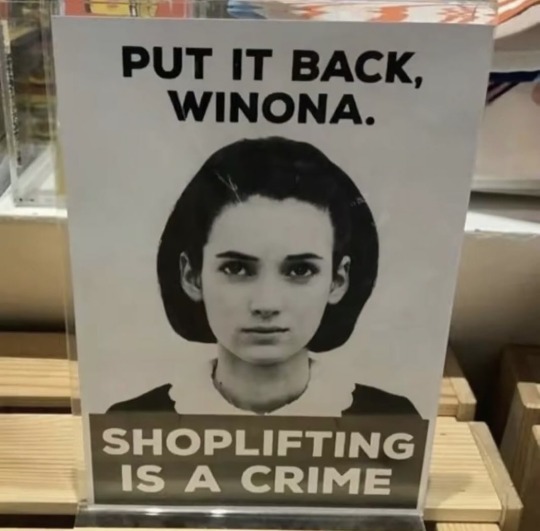


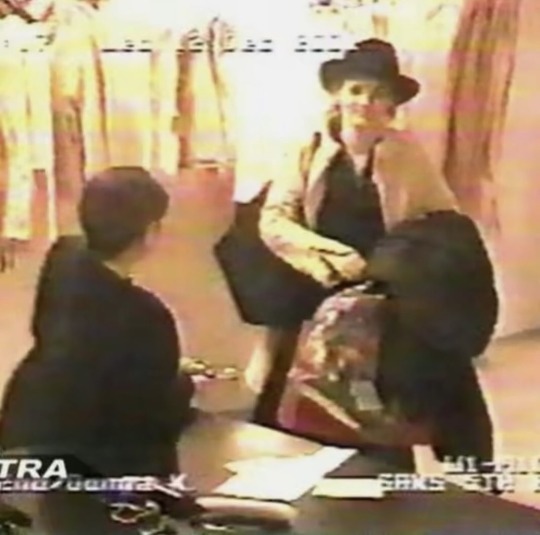
In 2001, Winona Ryder was arrested on shoplifting charges, she was accused of stealing $5000 dollars worth of designer clothes from Saks Fifth Avenue in Beverly Hills. This essentially got her blacklisted by Hollywood and she didn't really have a popular acting role until Stranger Things. Winona stood trial in 2002 and made several court appearances, in which she would always be dressed in stunning outfits. Her taste in fashion was so compelling that it earned her a campaign with one of the designers whose merchandise she stole.
"She may be a shoplifter, but she has impeccable taste," - Robin Givhan for the Washington Post.
#winona ryder#2001#hollywood#2000s#2000s nostalgia#fashion victim#pop culture#y2k pop#2000s pop culture
453 notes
·
View notes
Text
What's the vibe? #21

News:
Discord is 8 years old. They released a merch collection.
Inflation is up again. (Est 700k people have missed a bill/mortgage payment in the last month).
Peter Do is the new Creative Director of Helmut Lang.
Bio sequins (tree cellulose) for the first time being used on a Stella McCartney outfit.
https://www.radiantmatter.co
AI News:
Beyonce looks:
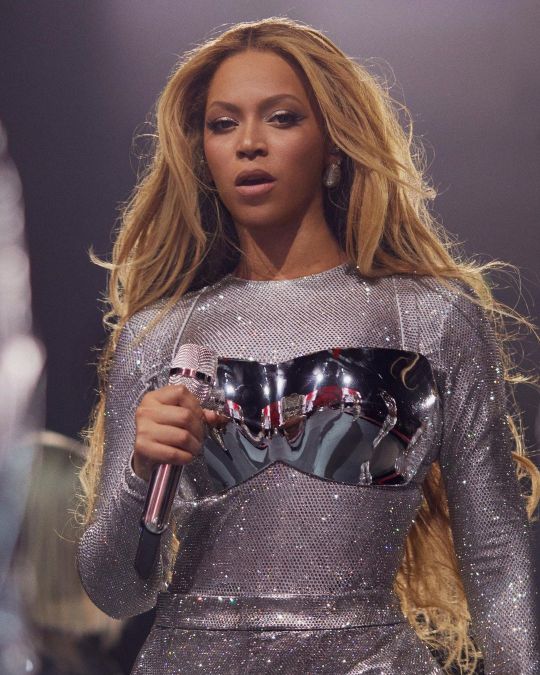
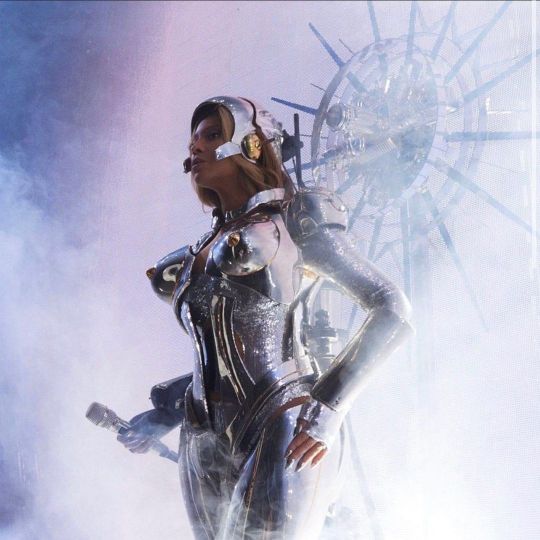


Suggestions for a 2024:
minimalism + candidness


Budget cuts - meaning either white b/gs or extreme surrealism
Pushing towards futurism next year >>>>> robots etc

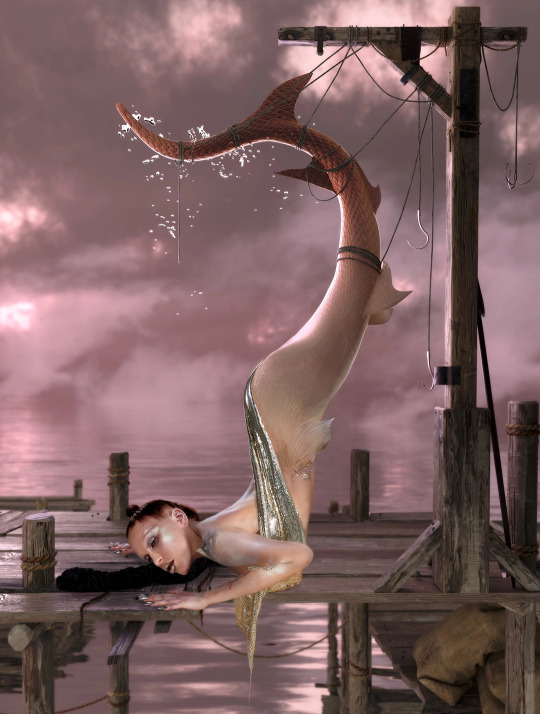

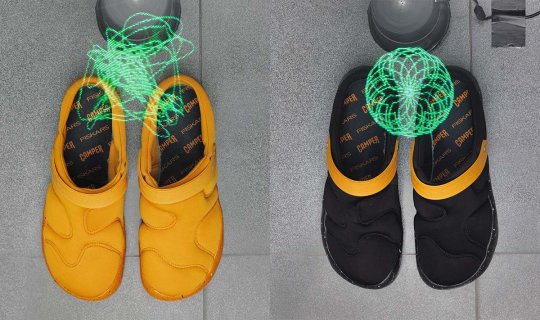
New Beauty

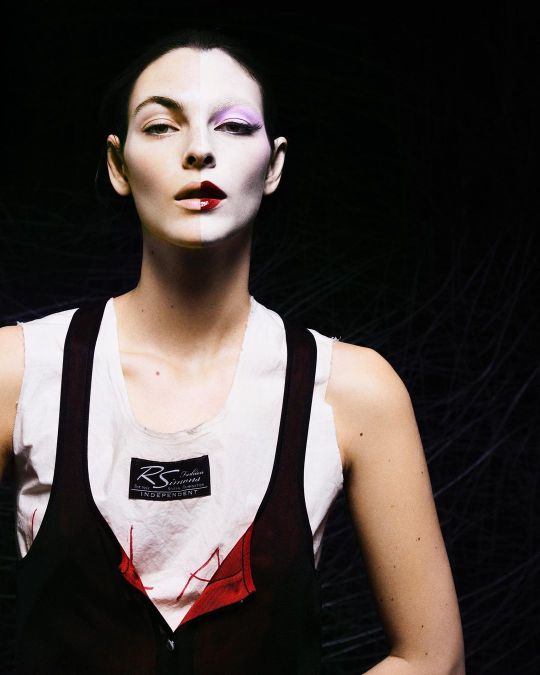

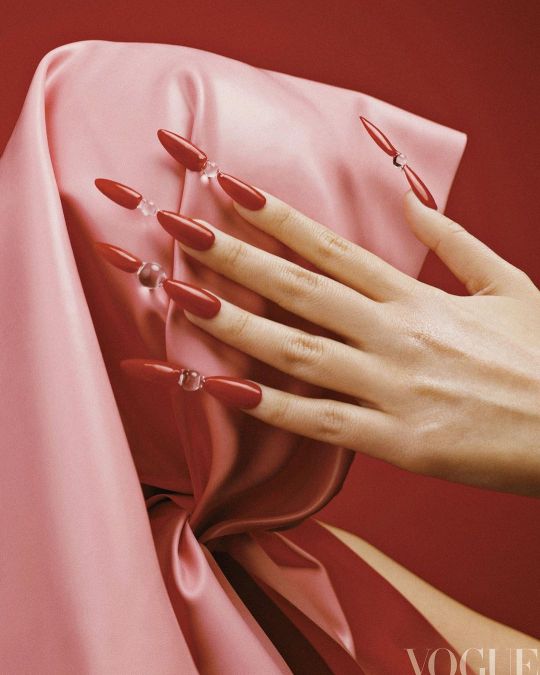
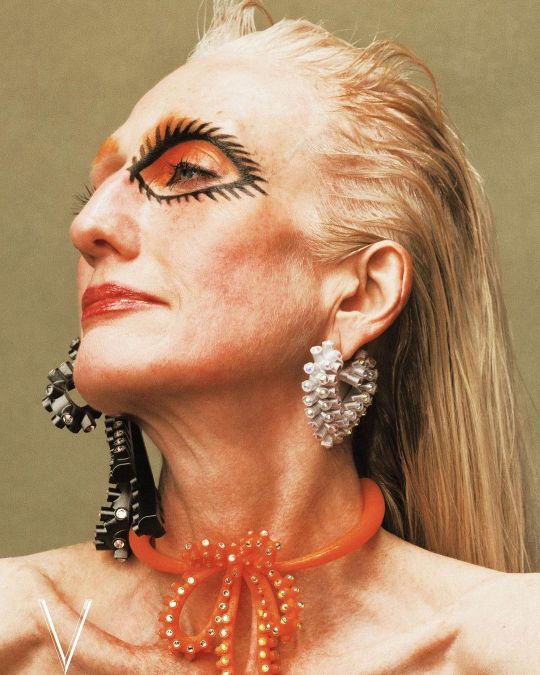
Reading List:
ARE ‘CORE TRENDS DESTROYING OUR SENSE OF PERSONAL STYLE? (Nylon)
REJECT MODERNITY, EMBRACE ELDERLY (HighSnob) - so you want to dress like Larry David?
‘I owe them a hell of a lot’: the gal-dem community on its legacy (Dazed)
This documentary explores how New Age travellers shaped UK rave culture (Dazed)
Robin Givhan on the State of Fashion Criticism in 2023 (Interview Magazine)
THE SPORTY SUNGLASSES CO-OPTED BY FASHION AND FASCISM (Fashionista)
3 notes
·
View notes
Text
This is a trial that reminds us of the smallness of Trump even as the idea of him, the myth of him has become outsize.
Robin Givhan, The Washington Post
0 notes
Text
PERSPECTIVE
When Fani Willis took the stand, her fury was precise and laser-focused
BY ROBIN GIVHAN
FEBRUARY 15 AT 9:06 PM
Fulton County District Attorney Fani T. Willis (D) walked into the Georgia courtroom Thursday afternoon where lawyers were arguing over whether she would have to take the stand. It was the back half of the long day’s hearing on whether Willis should be removed from the sprawling election tampering case her office has brought against former president Donald Trump and his associates. But the debate between the dueling teams of lawyers became moot when Willis announced that she wanted to testify. Willis settled into the high-backed witness chair. And then she loosed her fury.
She began by declaring that defense attorney Ashleigh Merchant had lied in court filings when she suggested that Willis had slept with special prosecutor Nathan Wade after their first meeting. She fumed that her privacy had been invaded. She reminded Merchant that, “You think I’m on trial. These people are on trial for trying to steal an election in 2020.” And she held up paperwork filed by defense lawyers in a display of disgust. For no small amount of time, it seemed that judge Scott McAfee was a mere bystander in his courtroom.
The hearing had been taken over by Willis and her outrage. Whether her anger was defensive or righteous, it was something to behold.
She sat with her body positioned at a slight angle and rested her fingers on her cheek. Sometimes, she’d lean forward into the microphone but mostly her posture was one of powerful repose. If there is a female equivalent to man-spreading, that tendency of men to sit with their legs akimbo as they take up more than their share of space on a bench or a bleacher, Willis’s stance may well be it. She filled the room with her presence.
She might be more accustomed to asking the questions in a courtroom than answering them, but Willis didn’t have the rigid posture that one so often sees from witnesses who might be fighting off nerves. She sat in the hot seat like it was her throne and she was ready to slice off some heads.
Willis’s testimony followed that of Wade, with whom she’s had a romantic relationship — a relationship that sparked these court proceedings. One of the issues at the heart of whether she should be removed from the case is whether she benefited financially from having appointed Wade to it. And so much of the day’s questioning focused on whether Wade footed the bill for plane tickets and cruises to places such as Belize, Aruba and Napa Valley. Wade explained that the two split costs, with Willis paying him back in cash — thousands of dollars in cash. At a time when many businesses only accept electronic payments and many people never carry cash, Wade made a mess of explaining why Willis was handing over wads of untraceable dollars. He began many sentences with, “Here’s the thing …” And by the time he reached the end of the sentence, well, there was no “thing” there.
Wade sat in the witness chair in his gray plaid three piece suit, with his white French-cuffed shirt, gold cuff links and powder blue pocket square. He grimaced and smiled and repeatedly referenced his wife’s affair as the cause of his filing for divorce in 2021 even though no one asked him why he split with his wife but rather when he started his relationship with Willis. The two have said their romance began after he became special prosecutor, but Merchant presented a witness, Robin Bryant-Yeartie, who contradicted that. Wade repeated his version of the timeline of his relationship with Willis. He drank lots of water, dabbed his face and sniffled ever more vigorously.
Bryant-Yeartie said she’s known Willis since college and that they were once good friends; she also worked in the District Attorney’s office until she was forced to resign. When presented with Bryant-Yeartie’s testimony, Willis made one thing clear immediately. The two might have known each other when they were college students; they might have gone to the same parties; but they did not attend the same college. Willis said she was a student at Howard University and Bryant-Yeartie went to Morgan State, and Morgan State is most definitely not Howard. Then she summed up Bryant-Yeartie as someone who was not her friend and didn’t know what she was talking about. And then Willis pursed her lips, blinked a few times and that was that. She was just getting started.
Willis lectured the gathered attorneys on the philosophy behind keeping cash on hand. Her father taught her that cash was king and a woman should always be financially self-reliant. And so, yes, she had a stash of cash accumulated over time and she used it to reimburse Wade. She dipped into it before a trip so she could pay taxi drivers or barter with vendors. Her description of her father’s advice was a compressed version of a complicated history and modern-day habit. She didn’t go into the discomfort that some Black people have with financial institutions or the ways in which banks have made it more difficult for Black people to do business with them. She didn’t mention that more older people believe in keeping ready cash and that a significant percentage of Black and Hispanic Americans use cash as their predominant payment method. She didn’t have to. She simply talked about what her father had told her to do as a matter of independence and power. “I don’t need any man to foot my bills,” Willis said.
Willis sat in the witness chair for hours. Or, more precisely, she reclined in the chair, woman-splaining how men define relationships and how they end them. She did so wearing a fuchsia dress with a single strand of beads around her neck. Her hair was styled in soft, shoulder-length curls and her eye makeup was precise and intentional. She was a singular bright spot surrounded by a black-robed judge and lawyers in mostly somber suits. Only Willis and her main inquisitor, Merchant, who wore a cobalt blue dress under a white blazer, stood out in the room’s sobriety.
During a November interview with The Washington Post, Willis was asked what advice she’d give to younger women who are trying to be heard. Willis said, in part, “You should be comfortable enough in your own skin to be authentically you, to be a woman. It’s okay to be pretty. It’s okay to, you know, think of things that are feminine things and still be a strong leader.”
Willis walked into court as a woman on the ropes. Some would say the hearing was a mess of her own making. Others might believe the whole mess is a distraction from more important matters. Either way, Willis fought back with gobsmacking fury — defiant in power pink.
Robin Givhan is senior critic-at-large writing about politics, race and the arts. A 2006 Pulitzer Prize winner for criticism, Givhan has also worked at Newsweek/Daily Beast, Vogue magazine and the Detroit Free Press.
0 notes
Text
https://www.washingtonpost.com/magazine/interactive/2022/robin-givhan-american-flag-race-photography/?itid=sf_lifestyle_magazine_latest%20features%202_p002_f001
0 notes
Text
fashion reading wishlist
battle of versailles, the: the night american fashion stumbled into the spotlight and made history by robin givhan
dress in the age of jane austen by hilary davidson
fashion victims the dangers of dress past and present by alison matthews david
the cartiers the untold story of the family behind the jewelry empire by francesca cartier brickell
0 notes
Text
Wknd Update: Karl Lagerfeld for The Met
6.3.23
Afternoon y’all! I have found some more of Karl Lagerfeld at The Met. From their YouTube channel, it is titled Karl Lagerfeld: Beauty in Process. This a more in depth description of Lagerfeld’s work. Here is a description from this video…
Robin Givhan, Senior Critic at Large, Washington Post William Middleton, biographer, Paradise Now: The Extraordinary Life of Karl Lagerfeld Andrew…

View On WordPress
#Fashion#June 2023#Karl Lagerfeld#Karl Lagerfeld: Beauty in Process#Metropolitan Museum of Art#slider#the Met#Weekend Upate#YouTube
0 notes
Text
• Nothing about voting is fancy or rarefied. It takes place in the most mundane locations: churches, recreation centers, elementary schools. It’s an intimate undertaking in the heart of communities. It's rule-bound and yet so informal. It’s private but not impersonal. —Robin Givhan

Washington Post
Washington Post (at Internet Archive)

0 notes
Link
Black Fashion Models | Three Generations Discuss Diversity. (2017). [Film]. youtube: The Museum at FIT.
0 notes
Text
Read PDF The Battle of Versailles: The Night American Fashion Stumbled into the Spotlight and Made History PDF -- Robin Givhan
Download Or Read PDF The Battle of Versailles: The Night American Fashion Stumbled into the Spotlight and Made History - Robin Givhan Free Full Pages Online With Audiobook.

[*] Download PDF Here => The Battle of Versailles: The Night American Fashion Stumbled into the Spotlight and Made History
[*] Read PDF Here => The Battle of Versailles: The Night American Fashion Stumbled into the Spotlight and Made History
0 notes
Text
Abbreviated Pundit Roundup: Without Sanctuary
Abbreviated Pundit Roundup: Without Sanctuary
We start this morning with Robin Givhan of The Washington Post pondering whether pictures of the murdered and mutilated bodies of 19 children in Uvalde, Texas should be seen in the public.
It’s an extraordinary human being who can, in the midst of profound grief, make the decision to transform their child into a symbol, into a motivating factor. Mamie Till did that when her 14-year-old son…

View On WordPress
0 notes
Photo

*Note: this post contains an affiliate link.
Darling Bonnie’s Book & Movie Club: ‘The Battle of Versailles’ + ‘Battle At Versailles’. #societythings
#darling#darling bonnie#darling society#darling bonnie land#high class hip hop#high street culture#art#culture#style#book#book club#darling bonnie's book club#movies#film#robin givhan#1970s#high style#style blog#style blogger#chic#glamour#1970s fashion#paris#battle at versailles#Societythings
2 notes
·
View notes